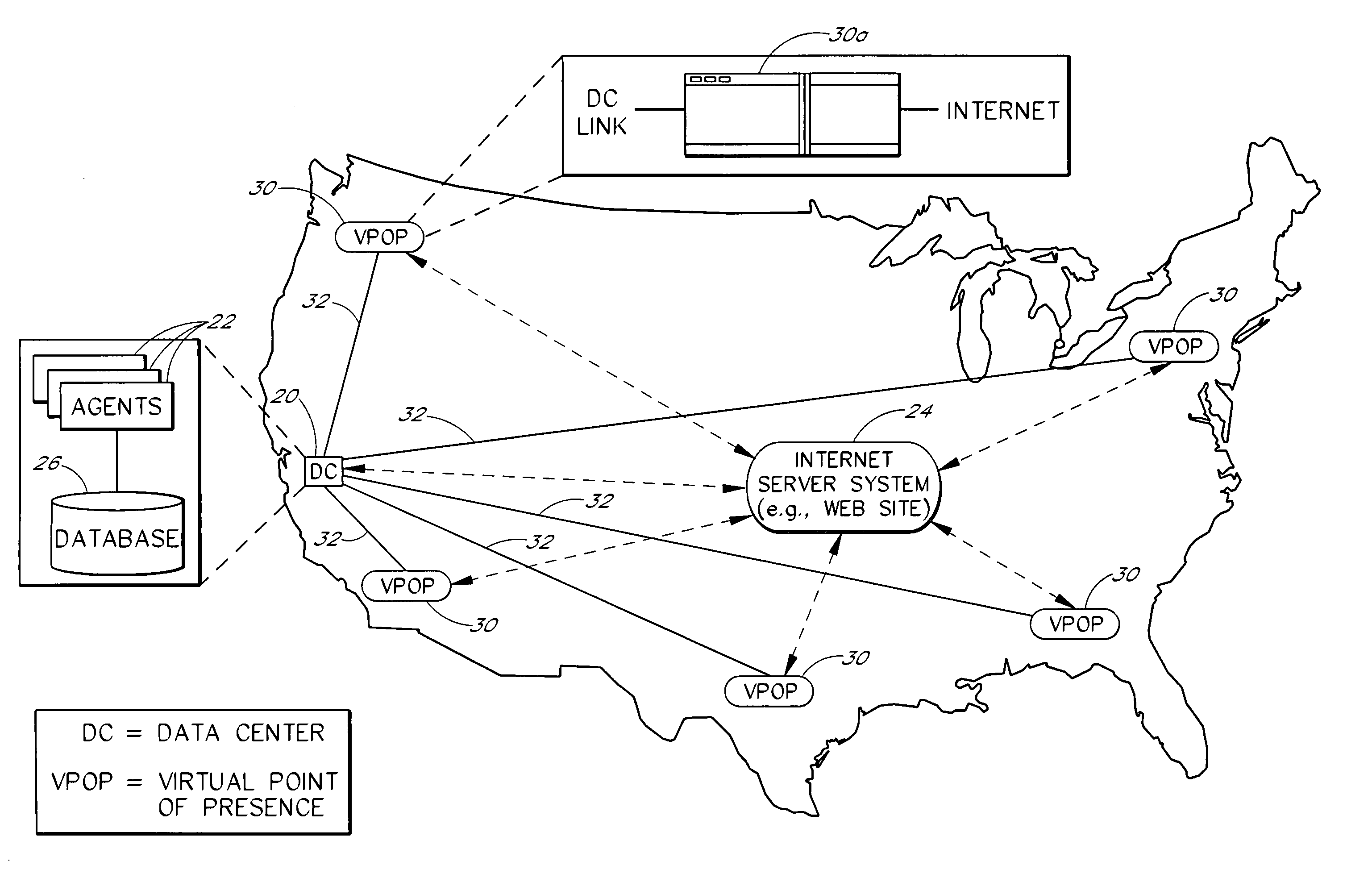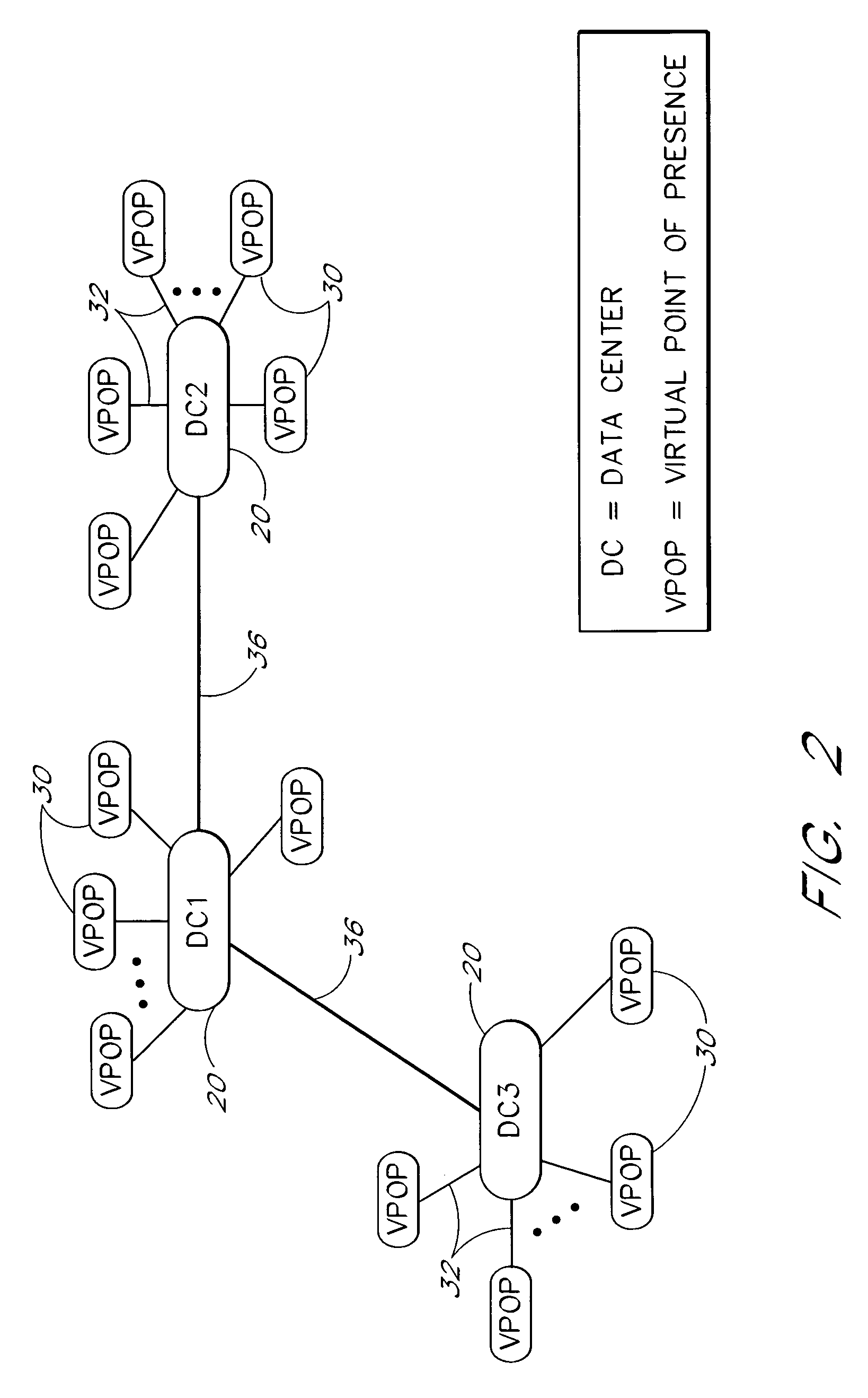Server monitoring virtual points of presence
a server and virtual point technology, applied in the field of server monitoring virtual points of presence, can solve the problems of inhibiting or delay the reporting of performance data, high cost of setting up and maintaining agent computers in many different geographic regions, and monitoring service providers incur costs for maintaining the security of agent computers, etc., to reduce the likelihood of delays or omissions in reporting, and the cost of setting up and maintaining the monitoring system is significantly reduced
- Summary
- Abstract
- Description
- Claims
- Application Information
AI Technical Summary
Benefits of technology
Problems solved by technology
Method used
Image
Examples
Embodiment Construction
[0016]The following description sets forth numerous implementation-specific details of a system for monitoring the performance of a web site or other Internet server system. These details are provided in order to illustrate a preferred embodiment of the invention, and not to limit the scope of the invention. The scope of the invention is defined only by the appended claims.
[0017]Throughout the description, the term “monitoring” will be used to refer generally to both continuous monitoring (e.g., accessing the server system once per hour) and to short term testing (e.g., load testing of a deployed or pre-deployed server system). Example components and methods that can be used to load test a web site or other server system over the Internet are described in above-referenced application Ser. No. 09 / 484,684.
[0018]FIG. 1 illustrates the general architecture of an example monitoring system according to the present invention. The monitoring system includes a data center 20 that hosts the a...
PUM
 Login to View More
Login to View More Abstract
Description
Claims
Application Information
 Login to View More
Login to View More - R&D
- Intellectual Property
- Life Sciences
- Materials
- Tech Scout
- Unparalleled Data Quality
- Higher Quality Content
- 60% Fewer Hallucinations
Browse by: Latest US Patents, China's latest patents, Technical Efficacy Thesaurus, Application Domain, Technology Topic, Popular Technical Reports.
© 2025 PatSnap. All rights reserved.Legal|Privacy policy|Modern Slavery Act Transparency Statement|Sitemap|About US| Contact US: help@patsnap.com



